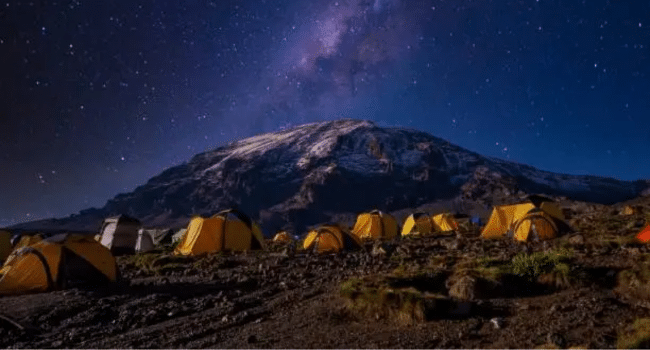Table of Contents
Kilimanjaro is the highest mountain in Africa and one of the most iconic peaks in the world. Every year, thousands of adventure seekers flock to Tanzania to challenge themselves and experience the beauty of this majestic mountain.
However, Climbing Kilimanjaro is not a walk in the park. It requires careful planning, preparation, and determination. Here are some essential things you need to know and do before you climb so you can do it safely and successfully.
Essential Things You Need to Know Before You Visit Kilimanjaro
Physical Preparation
Climbing Kilimanjaro is a physically demanding endeavor that requires stamina, strength, and endurance. Therefore, you must start training at least three months before your trip. A balanced training regimen may include:
- Cardiovascular exercises: These are exercises that increase your heart rate and improve your blood circulation and oxygen delivery. Examples are running, cycling, swimming, or aerobics. You should aim for at least three weekly sessions, lasting 30 to 60 minutes each.
- Strength training: These exercises build muscle mass and enhance balance and stability. Examples are weight lifting, squats, lunges, or push-ups. You should aim for at least two weekly sessions, targeting different muscle groups each time.
- Hiking: This is the most specific and relevant exercise for planning and climbing Kilimanjaro, as it simulates the actual conditions on the mountain. You should aim for at least one long weekly hike, preferably on hilly terrain and with a backpack. It would be best to gradually increase the distance and duration of your walks as you get closer to your trip.
To make your training more effective, follow a healthy diet, drink plenty of water, avoid alcohol and smoking, and get enough rest.
Essential Gear and Equipment
Packaging the right gear and equipment is another essential aspect of preparing for Kilimanjaro. You need high-quality, reliable items that withstand the mountain’s varying weather conditions and terrain.
Some of the essential gear and equipment are:
- Hiking boots: These are the most crucial item, as they protect your feet and ankles from injury and blisters. It would help to have sturdy, waterproof, comfortable boots that fit well and have good traction. You must also break them in before your trip by wearing them on your hikes.
- Clothing layers: These items keep you warm and dry on the mountain. It would help if you had a base layer, a mid-layer, an outer layer, and an insulation layer for different body parts. It would be best to have a hat, gloves, socks, and underwear. You should choose breathable, moisture-wicking, quick-drying, and lightweight clothing. You should also follow the “layering system,” which means adding or removing layers depending on the temperature and activity level.
Other gear and equipment you may need are a backpack, a duffel bag, a headlamp, sunglasses, sunscreen, a water bottle, a camera, a power bank, a first aid kit, toiletries, snacks, and personal documents.
You can either rent or buy gear and equipment for your climb. If you decide to rent, you should do so from a reputable source and check the quality and condition of the items before using them. If you choose to buy, you should do so from a trusted brand and test the things before packing them.
Safety and Guided Tours
The last but not least thing you need to know before climbing Kilimanjaro is how to ensure your safety and security on the mountain. Climbing Kilimanjaro is not risk-free and involves potential hazards such as altitude sickness, injuries, accidents, or wildlife encounters. For fewer risks, choose a top Kilimanjaro tour with a pro operator that ensures guidance, support, and safety.
A guided tour may include:
- A qualified guide: This person will lead you on the mountain and ensure your well-being. They will know the routes, weather conditions, emergency procedures, and local culture extensively. A qualified guide will also have certification from the Kilimanjaro National Park Authority (KINAPA) or the Kilimanjaro Association of Tour Operators (KIATO).
- A medical kit: This is a set of items that will help you treat any minor injuries or illnesses on the mountain. This kit will include bandages, painkillers, antiseptics, antibiotics, anti-diarrhea, anti-nausea, altitude sickness, rehydration salts, etc.
If you plan to climb Kilimanjaro, research online or ask friends and family who have climbed the mountain before for recommendations. Before booking, you should also check their reviews, ratings, prices, and policies.
Conclusion
Climbing Kilimanjaro is a once-in-a-lifetime adventure that can be rewarding and memorable. However, it also requires a lot of preparation and planning to ensure a safe and successful climb.
This post contains tips and advice to help you prepare for your incredible journey and enjoy it fully. Remember to start early, make informed decisions, and enjoy every moment. Kilimanjaro awaits you!
Read More on KulFiy
5 Reasons To Pick A Sand Free Towel For Your Next Beach Vacation
